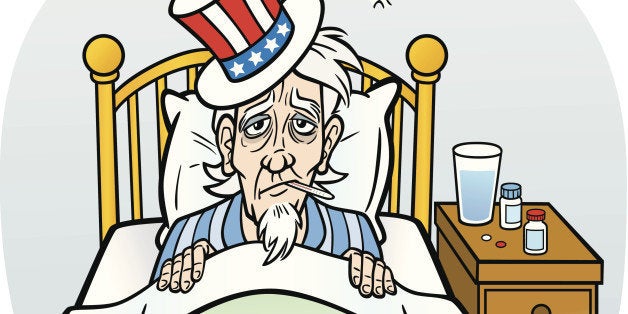
Originally Published by The Hill, Oct, 21, 2016
Our experience with the first six and a half years of the Affordable Care Act already tells us whether it will work.
Despite the law's goals of containing costs and making health care affordable, it's proven to be too expensive to be sustainable, overly complex and bureaucratic, and a gift to the private health insurance industry and other corporate stakeholders in the medical-industrial complex.
To be fair, the ACA has brought some kind of coverage to about 20 million Americans, in good part through the expansion of Medicaid in 32 states (including D.C.) and the subsidized exchanges. But its negative results far outweigh its gains, as shown by these data points:
- We still have 29 million uninsured Americans (compared to 48 million at the start), plus tens of millions underinsured.
- Insurance plan deductibles and co-pays have sharply increased, deterring people from seeking necessary care. A brand new market is opening up, "gap insurance," to cover what is not covered in today's market - insurance for those who have insurance.
- Narrowed networks under the ACA have forced many millions of patients to change their desired physicians and hospitals.
- The ACA has accelerated a national trend of corporate consolidation of insurers and hospitals, with growing market and political power.
- The ACA's regulation of health insurers has been lax, leaving insurers many ways to game the system (e.g. by overstating the health risks of their enrollees) in their self-interest.
- Expanding hospital systems, facing less competition, are free to charge much higher prices, by up 40 percent to 50 percent.
- Pharmaceutical drug prices have been sharply increasing, often shockingly so. A one-year course of cancer drugs often exceeds200,000, forcing many patients to choose between bankruptcy and treatment.
- The costs of insurance and health care now exceed25,000 for a family of four covered by an average employer-sponsored PPO plan.
- Overpayments to privatized Medicaid plans are endemic in more than 30 states, often involving unnecessary and duplicative payments.
- The ACA's accountable care organizations have failed to contain costs and improve quality of care.
- Most of the nonprofit co-ops established under the ACA have failed.
- Sign-ups for ACA coverage on the exchanges have fallen far short of expectations - just 11 million this year compared to 24 million forecasted, with many people unable to afford even subsidized coverage.
- Premium increases of 50 percent or more for 2017 are being reported in a number of states, including Minnesota, while many insurers are exiting their markets.
- Given this dysfunctional reality under the ACA, it's remarkable that neither major political party has a plan to truly fix the situation.
If elected, Hillary Clinton proposes to bring on the public option (which can't possibly succeed against the overwhelming market share of a subsidized insurance industry), increase subsidies, add new tax credits for deductibles and co-payments, and lower the age for Medicare eligibility to age 55. These tweaks would not reverse the huge private bureaucracy bent on increasing profits in markets subsidized by taxpayers.
Given the opportunity, Republicans would repeal the ACA with no credible plan for replacement - relying on such long-discredited approaches as consumer-directed health care, health savings accounts, high risk pools, selling insurance across state lines, and giving states more leeway with block grants.
We should have learned by now that segmented risk pools designed for profits by private health insurers will never provide universal access to affordable health care in this country.
Virtually all advanced countries around the world learned this long ago with one or another form of universal health insurance.
Multiple studies have demonstrated that in the U.S. we could save about $500 billion a year by enacting a nonprofit single-payer national health program that streamlines administration. Those savings would be sufficient to guarantee everyone high-quality care, with no cost sharing, on a sustainable basis. The system could also negotiate lower drug prices.
Studies over the past two decades have shown 3 of 5 Americans supporting an improved version of Medicare for all. Support for single payer is also growing among doctors and other health care professionals. Yet the Expanded and Improved Medicare for All Act, H.R. 676 (Rep. John Conyers' bill), with 62 co-sponsors, sits neglected in a House committee.
Until we recognize that the largest possible risk pool is required to implement universal coverage in the public interest, and that the private health insurance industry is on a death march, we cannot make necessary health care available to all Americans.
Can't we get to real health care reform on a nonpartisan, win-win basis?
John Geyman, M.D. is the author of The Human Face of ObamaCare: Promises vs. Reality and What Comes Next and How Obamacare is Unsustainable: Why We Need a Single-Payer Solution For All Americans
visit: http://www.johngeymanmd.org